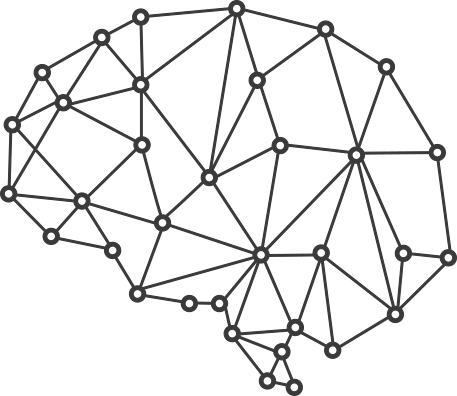Sudden changes in a child’s behavior can be alarming, especially when symptoms like tics or obsessive-compulsive tendencies appear without warning after a strep infection. For some children, these signs might point to a condition known as PANDAS disease. While the connection between strep infections and neurological symptoms might seem unusual, understanding how they relate can provide more insight into your child’s behaviors and help you find the right care.
What is PANDAS Disease?
PANDAS stands for “pediatric autoimmune neuropsychiatric disorders associated with streptococcal infections.” It is a condition where children suddenly experience changes in their behavior, movement, and mood following a streptococcal infection, such as strep throat, sinusitis, or scarlet fever. These abrupt changes can be alarming and may manifest as obsessive compulsive disorders (OCD), motor tics, or other neuropsychiatric symptoms.
What Causes PANDAS
PANDAS is linked to an autoimmune response triggered by a streptococcal infection. When the body encounters bacteria like strep, it produces antibodies to fight off the infection. However, in some cases, these antibodies mistakenly target healthy tissue. In PANDAS, the immune system may attack the basal ganglia, a brain region responsible for regulating movement and behavior.
This misdirected immune response can result in the sudden onset of neuropsychiatric symptoms. The condition shares similarities with other autoimmune disorders like rheumatic fever, where the immune system attacks the heart, joints, or brain following a strep infection.
How PANDAS is Diagnosed
When diagnosing PANDAS, healthcare providers look at specific criteria that distinguishes it from other neuropsychiatric conditions. The diagnosis typically includes:
- Sudden onset of symptoms resembling OCD or a tic disorder.
- Pediatric onset with symptoms appearing between the ages of 3 and the start of puberty.
- An episodic pattern where symptoms worsen dramatically following a strep infection.
- Evidence of a temporal link between the onset or worsening of symptoms and a group A beta-hemolytic streptococcal (GABHS) infection.
- Presence of neurological issues such as tics, hyperactivity, or choreiform movies
Common Symptoms of PANDAS Disease
Children with PANDAS often experience a range of psychological and neurological symptoms, which can appear suddenly. Here are some of the most frequently reported symptoms:
Psychological symptoms:
- Sudden anxiety, depression, or mood swings
- Bedwetting or loss of previously developed skills
- Noticeable changes in personality such as irritability or uncontrollable rage
- Sleep disturbances or trouble falling asleep
- Loss of interest in food
- Fidgeting and other symptoms that resemble ADHD
- Obsessive-compulsive behaviors or rituals
- Intense separation anxiety
Neurological symptoms:
- Impaired motor skills, including handwriting difficulties
- Trouble focusing or learning which may impact school performance
- Decreased coordination or clumsiness
- Heightened sensitivity to sounds, lights, or textures
Who Can Get PANDAS Syndrome?
PANDAS syndrome primarily affects children between the ages of 3 and the start of puberty. Although it is most commonly identified in children, there are rare cases where symptoms may persist or emerge during adolescence. Adults are generally not considered at risk for developing PANDAS, as the condition is linked specifically to immune responses that are more common during childhood. However, adults with a history of childhood PANDAS may continue to experience some symptoms into adulthood.
How Common is PANDAS?
The exact prevalence of PANDAS is not well-established, as no large-scale epidemiological studies have been conducted. However, it is considered a rare condition. Researchers estimate that a subset of the 2-3% of children worldwide diagnosed with OCD and the 0.3-0.8% of children diagnosed with Tourette syndrome may also meet the criteria for PANDAS. While these numbers suggest PANDAS is uncommon, awareness is growing, and more children are being evaluated for the disorder when they present with sudden and severe neuropsychiatric symptoms following a strep infection.
What Happens if PANDAS Goes Untreated?
When PANDAS is left untreated, the condition can lead to ongoing psychological and neurological challenges. Without medical intervention, symptoms may persist and even worsen over time. This can result in long-term issues such as obsessive-compulsive behaviors, tics that interfere with activities like handwriting, and heightened anxiety. With each new streptococcal infection, there is a risk of symptom escalation and increased severity.
Potential consequences of untreated PANDAS may include:
- Persistent obsessive-compulsive behaviors
- Development of tics that can interfere with daily tasks
- Long-term anxiety disorders
- Sleep disturbances
- Motor skill challenges and coordination issues
- Sensory sensitivities like heightened sensitivity to light or sound
How Long Does PANDAS Last?
How long PANDAS lasts can depend on how quickly the underlying strep infection is identified and treated. Typically, symptoms last for about 4-6 weeks if caught and treated early. However, symptoms may reappear if the child experiences a new strep infection. In some cases, lingering symptoms can persist for months or even longer, especially if the condition is not managed well.
Treatment Options for PANDAS
While there is no cure for PANDAS, there are treatment options that can help manage symptoms. Here are some treatments that may be available:
- Psychiatric and Behavioral Therapies – Cognitive-behavioral therapy (CBT) with exposure and response prevention (ERP) is effective in treating OCD symptoms in children with PANDAS. Studies show significant improvement in symptoms following therapy. Comprehensive behavioral intervention for tics (CBIT) and habit reversal training (HRT) are also beneficial for managing tic-related symptoms.
- Medications for OCD and Tics – Selective serotonin reuptake inhibitors (SSRIs) such as fluoxetine, sertraline, and fluvoxamine may be prescribed to treat moderate to severe OCD symptoms. Antipsychotics are used for debilitating symptoms that do not respond to other treatments.
- Antibiotics – Since PANDAS is associated with streptococcal infections, antibiotics can help address the underlying infection and reduce symptoms. Treatment with antibiotics like penicillin or azithromycin may be recommended based on the patient’s history of strep infections.
- Immunomodulatory Therapies – Anti-inflammatory treatments like NSAIDs may help manage mild symptoms. For more severe cases, corticosteroids like prednisone or dexamethasone can reduce inflammation and improve symptoms.
These treatment options work best when combined and personalized for each child’s specific symptoms and severity.
Managing PANDAS disease can feel overwhelming, but getting the right help can make a difference. If your child has shown sudden changes in behavior or developed symptoms like tics or obsessive-compulsive behaviors after a strep infection, it may be time to seek medical care. Acting early can help manage the symptoms and reduce the risk of long-term effects. Reach out today to discuss treatment options that can support your child’s mental health and well-being.
Let’s Discuss Treatment Options.



